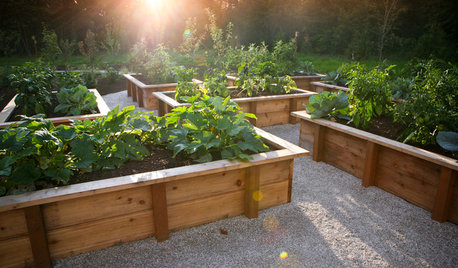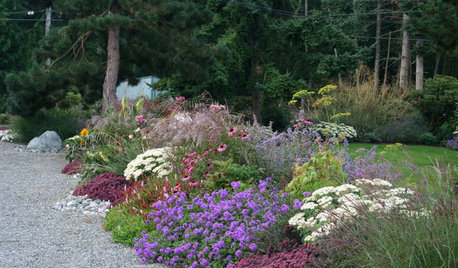How to prepare the bed?
sresutek
18 years ago
Related Stories

TRAVEL BY DESIGNHow to Prepare Your House for a Home Swap
Trading homes for your vacation? Leave yours in great shape for your guests and help them enjoy a happy break with these 12 tips
Full Story
LIFEHow to Prepare Your House for Emergencies
Knock on wood you won't have any big mishaps at home, but it's important to be ready. Our checklist can help
Full Story
GARDENING GUIDESSoutheast Gardener's October Checklist
When you're not toting houseplants back inside or planting cool-season crops, you can start preparing garden beds for next year
Full Story
GARDENING AND LANDSCAPINGRaised Beds Lift Any Garden
From good old-fashioned wood garden boxes to modern metal troughs, raised beds can make any landscape space look great
Full Story
BEDROOMSHow to Get the Look of a Rope-Hung Bed
A true hanging, swinging bed can be pricey to install. Get the next best thing with a platform bed and decorative rope. Here’s how
Full Story
TRAVEL BY DESIGNHomes Away From Home: 10 Charming U.S. Bed-and-Breakfasts
Looking for a more personal stay on your getaway? These homey bed-and-breakfasts roll out the welcome mat in style
Full Story
GARDENING GUIDES8 Materials for Raised Garden Beds
Get the dirt on classic and new options for raised vegetable and plant beds, to get the most from your year-round garden
Full Story
MOST POPULARHow to Design a Colorful Flower Bed
Fall planting: Delight the eye through 3 seasons with bright flowers placed just right. Late summer is the time to plan
Full Story
FEEL-GOOD HOMEThe Pros and Cons of Making Your Bed Every Day
Houzz readers around the world share their preferences, while sleep and housekeeping experts weigh in with advice
Full Story
TRAVEL BY DESIGNShould You Open a Bed-and-Breakfast?
Before you commit to innkeeper dreams in your home or an existing B and B, here's what you need to know
Full StorySponsored
Your Custom Bath Designers & Remodelers in Columbus I 10X Best Houzz
More Discussions






space57
sresutekOriginal Author
Related Professionals
Clark Landscape Architects & Landscape Designers · Fitchburg Landscape Architects & Landscape Designers · Milwaukee Landscape Architects & Landscape Designers · Mason Landscape Contractors · National City Landscape Contractors · Panama City Beach Landscape Contractors · Pikesville Landscape Contractors · Santa Maria Landscape Contractors · Soddy Daisy Landscape Contractors · Vermilion Landscape Contractors · West Covina Landscape Contractors · Winchester Landscape Contractors · Lauderdale Lakes Landscape Contractors · Casselberry Landscape Contractors · Homestead Window Contractorsvetivert8
sresutekOriginal Author
thorspippi
lindac
elgrillo
pinkclogs
lisa455
jhughes_starone_com
appletreasure
pitimpinai